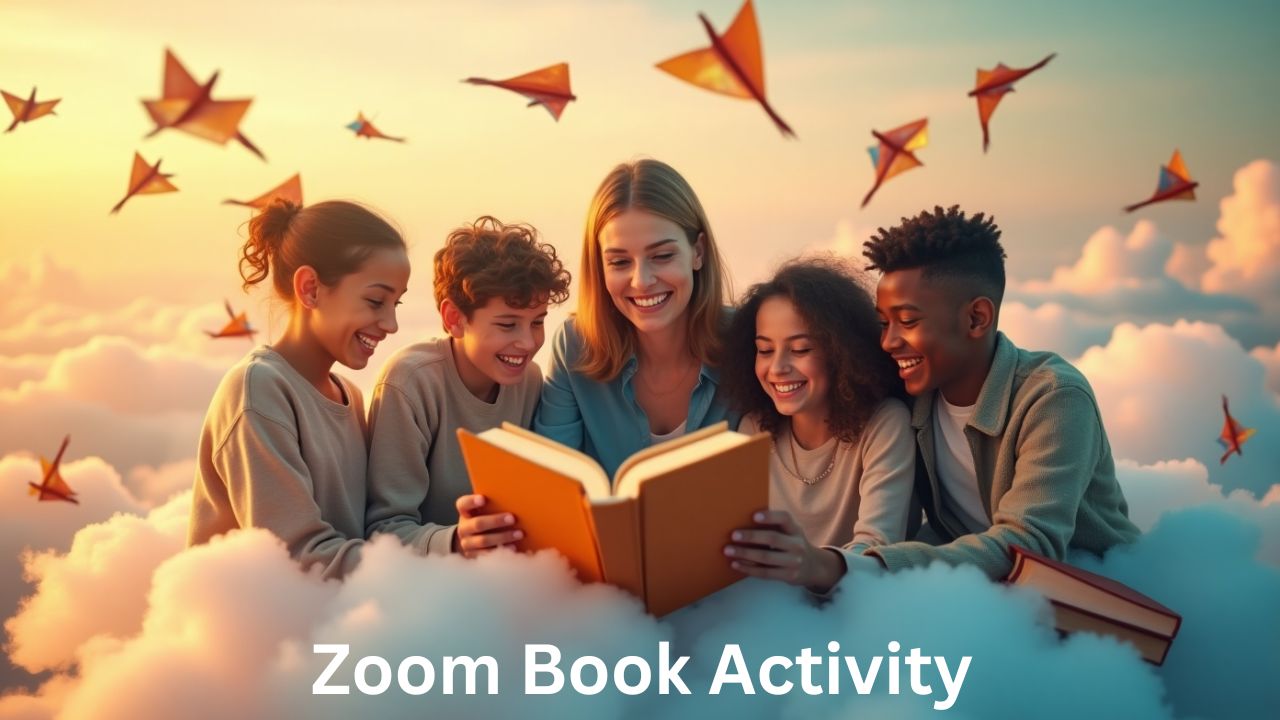
Zoom Book Activity
Introduction: Why a Zoom Book Activity is Essential for Virtual Learning
Virtual classrooms have changed how students engage with literature. Teachers need interactive strategies to keep online book discussions engaging and enjoyable. A Zoom book activity helps students stay focused, participate actively, and develop a deeper love for reading.
Technology allows readers to connect, share insights, and explore literature in creative ways. A structured approach transforms traditional book discussions into dynamic experiences. Students benefit from activities that encourage critical thinking, creativity, and social interaction.
Engaging students through storytelling, role-playing, and virtual games ensures online reading sessions remain exciting. Educators can implement fun strategies that make reading an immersive and interactive experience.
Preparing for an Effective Zoom Book Activity
Selecting the Right Book for Engagement
A well-chosen book makes all the difference. Teachers should consider:
-
Age-appropriate themes that interest students
-
Books with relatable characters and engaging plots
-
Stories that encourage discussion and analysis
Popular choices include graphic novels, adventure stories, and mystery books. Nonfiction works can also provide thought-provoking discussions.
Setting Up a Structured Schedule
A structured plan helps maintain focus and participation. Educators should:
-
Assign reading sections before each session
-
Provide discussion prompts for deeper engagement
-
Set clear expectations for student participation
Students benefit from knowing when and how they will contribute. Organized sessions promote active involvement and accountability.
Using Zoom Features to Enhance Participation
Zoom offers several interactive tools for engagement:
-
Breakout Rooms: Small group discussions on different themes
-
Polls: Quick quizzes to assess comprehension
-
Chat Box: Instant reflections on key moments
-
Screen Sharing: Visual aids, illustrations, and book excerpts
These tools create an interactive learning environment that keeps students involved throughout the session.
Engaging Zoom Book Activities for Interactive Reading
1. Virtual Book Cover Design Challenge
Students create alternate book covers based on their interpretations of the story. They present their designs and explain creative choices. This activity encourages artistic expression while reinforcing comprehension.
2. Character Role-Playing Interviews
Students choose a character and answer questions as if they were in the book. The class asks about motivations, decisions, and personality traits. Role-playing makes character analysis engaging and interactive.
3. Book-Themed Scavenger Hunt
The teacher provides a list of objects related to the book. Students find similar items in their homes and explain their connections to the story. This activity enhances text-to-world connections.
4. Mystery Box Prediction Game
Before finishing a book, the teacher places clues in a “mystery box” about the ending. Students guess outcomes based on evidence from the text. This activity develops inferencing skills and critical thinking.
5. Digital Story Mapping
Students create visual story maps using online tools like Canva or Google Slides. They outline major events, character development, and key conflicts. This approach helps students organize and retain information.
6. Zoom Emoji Reactions for Literary Devices
The teacher reads passages with literary devices like metaphors or similes. Students react using Zoom emojis that represent their interpretations. This quick-response activity reinforces figurative language recognition.
Fun Discussion-Based Zoom Book Activities
7. Would You Rather – Story Edition
The teacher presents questions like:
-
Would you rather be the protagonist or the antagonist?
-
Would you rather change the ending or rewrite the beginning?
Students discuss their choices, supporting arguments with evidence from the book.
8. Virtual Literary Debate
Divide students into teams. One side defends a character’s decisions, while the other argues against them. This structured debate promotes critical analysis and persuasive speaking skills.
9. Alternate Ending Group Project
Students rewrite the ending of a book, either as a summary or a full scene. They present their versions and explain how their changes impact the story’s message.
10. Book vs. Movie Comparison
If a book has a film adaptation, students watch the movie and compare it with the original text. They analyze differences in themes, characters, and key events.
Creative Writing Activities Inspired by Books
11. Letter to a Character
Students write letters to a character, offering advice, asking questions, or expressing their thoughts about their journey. They read letters aloud and discuss their responses.
12. Social Media Character Profiles
Students create fictional social media profiles for book characters. They include posts, comments, and hashtags reflecting personalities and story events. This activity connects literature to modern digital culture.
13. One-Sentence Summaries
Students summarize each chapter in a single sentence. They compile summaries into a presentation or digital book review. This concise writing exercise sharpens analytical skills.
14. Book-Themed Poetry Challenge
Students write poems inspired by book themes, settings, or emotions. They share their poems and explain how the story influenced their work.
Incorporating Multimedia into Zoom Book Activities
15. Virtual Book Trailers
Students create short videos summarizing the book as a movie trailer. They include visuals, voiceovers, and dramatic music to enhance storytelling.
16. Animated Scene Recreation
Using digital tools, students animate a key scene from the book. They present their animations and discuss the significance of their chosen moments.
17. Author Spotlight Research Project
Students research the book’s author and present fun facts, inspirations, and writing styles. They explore how the author’s background influenced the book.
18. Audiobook Narration Challenge
Students record themselves reading a book excerpt using expressive voices and sound effects. They share recordings and critique each other’s narration techniques.
Using Technology for Interactive Learning
19. Interactive Google Jamboard Discussions
Teachers post discussion prompts on Google Jamboard. Students add digital sticky notes with responses, creating a collaborative discussion board.
20. Padlet Book Reflection Wall
Students post thoughts, quotes, and favorite moments from the book on a Padlet wall. This interactive approach encourages peer-to-peer engagement.
21. Kahoot Book Quizzes
The teacher creates a Kahoot quiz with questions about characters, themes, and events. Students compete in a fun, game-based review session.
22. Flipgrid Video Reflections
Students record video reflections about their reading experience. They share insights and respond to classmates’ videos, fostering deeper discussions.
Building a Strong Zoom Book Club Community
23. Virtual Reading Buddies
Pair younger and older students as reading buddies. Older students mentor younger ones, guiding discussions and answering questions.
24. End-of-Book Celebration Party
Host a themed Zoom party when finishing a book. Students dress as characters, play trivia, and share favorite moments.
25. Monthly Reading Challenges
Create reading challenges with fun goals, like “Read a Book with a Blue Cover” or “Find a Story with a Strong Female Lead.”
Conclusion: Making Virtual Reading Engaging with Zoom Book Activities
A Zoom book activity transforms online reading into an interactive and enjoyable experience. Through games, discussions, and creative projects, students stay engaged and develop deeper literary understanding.
Using multimedia, digital tools, and structured participation ensures every student remains involved. Educators can foster a love for reading by making virtual book activities exciting and meaningful.
By implementing these strategies, teachers create memorable online reading experiences that keep students eager to explore literature. Engaging activities help students connect with stories, characters, and ideas in a fun and interactive way.







